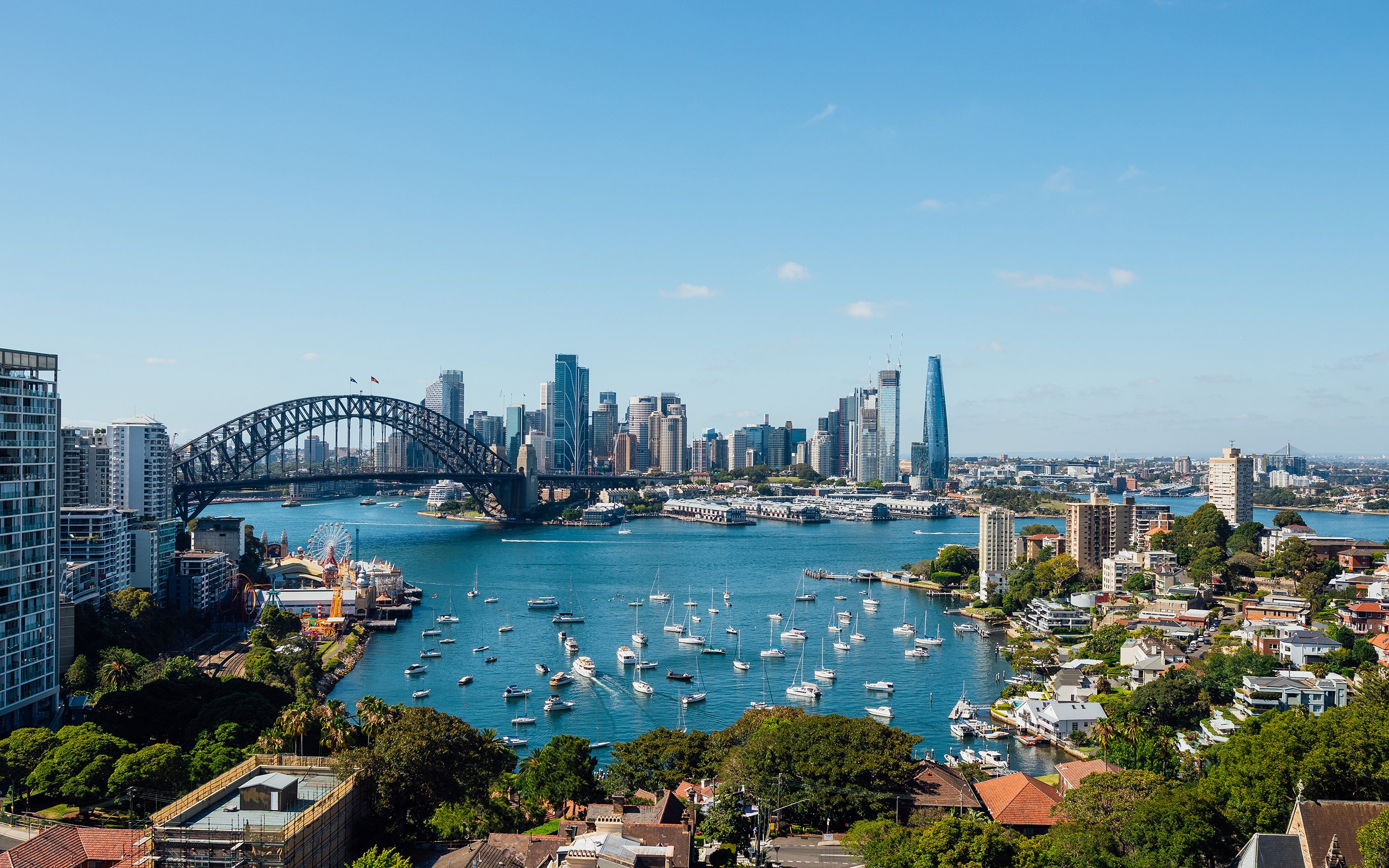Features > Property News & Insights > Investment News
Why Sydney could become 'the city with no grandchildren'

KEY POINTS
- Sydney is losing highly productive workers aged between 30 and 40 at an alarming rate
- The New South Wales Productivity Commission says expensive housing is driving these workers out of the harbour city
- As many people in their 30s and 40s have young children or are starting families, the Commission warns that if this trend continues, Sydney could end up being a “city with no grandchildren”
- The Productivity Commissioner says the answer is building more “in-fill” housing, namely apartments and townhouses nearer to the CBD “where people want to live”
There’s no debate that housing in Sydney is expensive, and not just by Australian standards.
In fact, international statistics house Demographia has rated Sydney as the second least affordable city for housing in the world, with only land-locked Hong Kong ahead of it.
It’s great news if you own property in the harbour city - not so great if you rent or aspire to buy your own home.
And it’s not great news for families, especially couples with young children.
That’s been starkly illustrated in a new housing report from the New South Wales Productivity Commission which warns that if things don’t change Sydney could become known as “the city with no grandchildren.”
The problem
The Commission’s report, “What we gain by building more homes in the right places” sets out the problem.
While all cities lose and gain people every year, over time, Sydney is losing some of its most productive citizens.

Between 2016 and 2021, Sydney lost nearly 40,000 people in the 30 to 40 age bracket.
“Thousands of people between the ages of 30 and 40 are leaving Sydney every year, many because of the high cost of housing,” says New South Wales Productivity Commissioner Peter Achterstraat.
“For every person in their 30’s who comes to live in Sydney, two leave.”
Mr Achterstraat says people in that age cohort have “generally completed their training, they've had 10 or more years' (work) experience and the majority are tech savvy."
"If these productive workers leave Sydney, then it means the rest of us who stay here are going to have to work a little bit harder to produce the same level of goods and services."
Given that many people in that age cohort are also starting families, Mr Achterstraat has a stark message.
“If we don't act now, we could face Sydney becoming known as the city with no grandchildren.”

As the graph above shows, 30-40 year olds leaving Sydney are heading to regional New South Wales, Victoria, Queensland and Canberra.
The overwhelming reason?
Cheaper housing.
“Many young families are leaving Sydney because they can’t afford to buy a home,” Mr Achterstraat says, “Or they can only afford one in the outer suburbs with a long commute.”
The Commissioner is backed here by the State Minister for Planning, Paul Scully, who says large housing costs are making it harder for people to stay near the same suburbs as their families or live close to their jobs.
The solution
According to the New South Wales Productivity Commission, the answer to keeping Sydney’s best and brightest is right there in the name of its report.
“What we gain by building more homes in the right places” argues that Sydney needs greater housing density, particularly in the inner suburbs.
“We can turn this exodus (of 30-40 year olds) around by letting people build up in areas closer to the CBD where they want to live,” Commissioner Peter Achterstraat says.
“In fact, if we'd allowed three extra stories on new apartment buildings built between 2017 and 2022, Sydney would have 45,000 extra dwellings, and prices and rents would be five and a half per cent lower, saving the average renter about $35 a week, or $1,800 a year.”
You can almost hear the sharp intake of breath from many councils and residents of inner city Sydney suburbs, who’ve railed against large developments affecting the “amenity” and “heritage” of existing residents.
The Productivity Commissioner says he hopes to help shift Sydneysiders’ mentality from
being NIMBYs (Not In My Backyard) to what he calls “ADIMBYs” – people who support “Appropriate Density in My Backyard”.
The report argues that once you get beyond Sydney’s CBD, population density is quite low by international standards.
“Blanket heritage protections cover a large proportion of inner Sydney, reducing the land available for new housing near the city, near train stations and near jobs,” Mr Achterstraat says.
“We know from overseas that density done well provides benefits for households, communities, and the economy.
“New apartments and townhouses in inner suburbs will let young families live near their parents and their children’s grandparents,” he says.
“The social benefits of abundant well-located homes are major.”
As for heritage concerns, the Commissioner says he still believes “we can preserve the gems of Sydney's heritage and maintain its charm and character while still making space for future generations in our beautiful city.”
"It'd be lovely if more people could live closer to the heritage so that they can benefit from it and visit it more often," he adds wryly.
The good news is that the Productivity Commissioner believes the tide is turning and that in the last year, there’s been a more “mature and reasoned discussion from all sectors of the community” about greater housing density in Sydney.
Maybe in the future, Sydneysiders with adult children might not have to miss out on time with the grandkids after all.
Stay Up to Date
with the Latest Australian Property News, Insights & Education.




.png?width=292&height=292&name=Copy%20Link%20(1).png)
 SIGN UP FOR FREE NEWSLETTER
SIGN UP FOR FREE NEWSLETTER
%20(1).png)

.png)





.jpg?width=1920&height=1080&name=Warning%2c%20You%20Might%20Be%20Facing%20Higher%20Taxes%20Soon%20(1).jpg)





.png?width=1920&height=1080&name=Rate%20Drops%20Signal%20BIGGEST%20Property%20Boom%20in%20DECADES%20(1).png)

.jpg?width=1920&height=1080&name=Labor%20vs%20Liberal%20These%20Housing%20Policies%20Could%20Change%20the%20Property%20Market%20Forever%20(1).jpg)
.jpg?width=1920&height=1080&name=QLD%20Slashes%20Stamp%20Duty%20Big%20News%20for%20Investors%20%26%20Home%20Buyers%20(1).jpg)
.jpg?width=1920&height=1080&name=Trump%20Just%20Slapped%20Tariffs%20%E2%80%93%20Here%E2%80%99s%20What%20It%20Means%20for%20Australia%20(1).jpg)
.jpg?width=1920&height=1080&name=Federal%20Budget%202025%20More%20Debt%2c%20No%20Housing%20%E2%80%93%20Here%E2%80%99s%20What%20You%20Need%20to%20Know%20(1).jpg)
.jpg?width=1920&height=1080&name=Australias%20Housing%20Crisis%20is%20about%20to%20get%20MUCH%20Worse%20(New%20Data%20Warns).jpg)
%20(1).jpg?width=1920&height=1080&name=Australias%20RENTAL%20CRISIS%20Hits%20ROCK%20BOTTOM!%20(2025%20Update)%20(1).jpg)
%20(1).png?width=1920&height=1080&name=Is%20Adelaide%20Still%20a%20Good%20Property%20Investment%20(2025%20UPDATE)%20(1).png)
.jpg?width=1920&height=1080&name=RBA%20Shocks%20with%20Rate%20Cuts!%20What%E2%80%99s%20Next%20for%20Property%20Investors%20(1).jpg)
%20(1).jpg?width=1920&height=1080&name=I%20Predict%20The%20Feb%20Rate%20Cut%20(My%20Price%20Growth%20Prediction)%20(1).jpg)
.png?width=1920&height=1080&name=Why%20Property%20Prices%20Will%20Rise%20in%202025%20Market%20Predictions%20(1).png)
.jpg?width=1920&height=1080&name=Why%20Investors%20Are%20Choosing%20Apartments%20Over%20Houses%202%20(1).jpg)
.jpg?width=1920&height=1080&name=Why%20Rate%20Cuts%20Will%20Trigger%20A%20Property%20Boom%20(1).jpg)
.jpg?width=1920&height=1080&name=Retire%20On%202Million%20With%20One%20Property%20(Using%20SMSF).jpg)
.jpg?width=1920&height=1080&name=4%20Reasons%20Why%20You%20Should%20Invest%20in%20Melbourne%20Now%20(1).jpg)
%20(1).jpg?width=1920&height=1080&name=Old%20Property%20vs%20New%20Property%20(Facts%20and%20Figures%20Revealed)%20(1).jpg)
%20(1).jpg?width=1920&height=1080&name=Will%20The%20New%20QLD%20Govt%20Create%20a%20Property%20Boom%20or%20Bust%20(My%20Prediction)%20(1).jpg)
%20Scott%20Kuru%20(1).jpg?width=1920&height=1080&name=Inflation%20Hits%20Three-Year%20Low%20(Will%20RBA%20Cut%20Rates%20Soon)%20Scott%20Kuru%20(1).jpg)
.jpg?width=1920&height=1080&name=How%20to%20Buy%20Investment%20Property%20Through%20SMSF_%20The%20Ultimate%20Guide%20(1).jpg)
.jpg?width=1920&height=1080&name=Victoria%20Slashes%20Stamp%20Duty%20Melbourne%20Set%20to%20Boom%20Scott%20Kuru%20(1).jpg)
.png?width=1571&height=861&name=Are%20Foreign%20Buyers%20Really%20Driving%20Up%20Australian%20Property%20Prices%20(1).png)
.jpg?width=1920&height=1080&name=The%20Single%20Factor%20That%20Predicts%20Property%20Growth%20Regions%20(1).jpg)
%20Scott%20Kuru%20(1).jpg?width=1920&height=1080&name=My%20Prediction%20On%20Rates%20%26%20Negative%20Gearing%20(Market%20Crash)%20Scott%20Kuru%20(1).jpg)

-1.png?width=1920&height=1080&name=Major%20Banks%20Cut%20Rates%20Will%20RBA%20Follow%20Suit%20(Sept%20Rate%20Update)-1.png)
%20Scott%20Kuru-1.png?width=1920&height=1080&name=Rate%20Cut%20Coming%20What%20New%20Zealands%20Move%20Means%20for%20Australia%20(Sept%20Prediction)%20Scott%20Kuru-1.png)
%20(1).jpg?width=1920&height=1080&name=Buy%20when%20the%20interest%20rates%20are%20high!%20(Why%20you%20must%20buy%20now!)%20(1).jpg)
.jpg?width=1920&height=1080&name=Carms_Revised%20Taxes%20Due%20Aug%209%20YT%20Thumbnail02%20(1).jpg)
.jpg?width=1920&height=1080&name=Carms_Too%20Little%20Too%20Late%20Aug%207%20YT%20Thumbnail01%20(1).jpg)









.jpg?width=1920&height=1080&name=Carms_Rate%20Drop%20In%20July%20Jun%2010%20YT%20Thumbnail02%20(1).jpg)
.jpg?width=1920&height=1080&name=Carms_Own%20a%20Property%20V6%20Jun%205_YT%20Thumbnail%20(1).jpg)









.png?width=1920&height=1080&name=Artboard%201%20(3).png)






.jpg?width=1920&height=1080&name=YT%20thumbnail%20%20(1).jpg)

